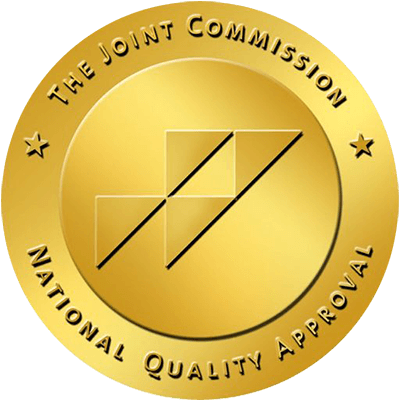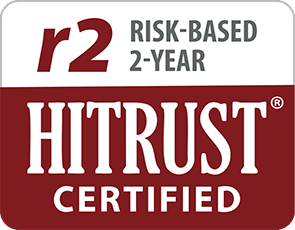Written by Ashley Kane,
Brightside Health
12 Minute Read

Medically reviewed by:
Conor O’Neill, PHD
Assoc. Director of Therapy
10 Minute Read

When it comes to managing mental health conditions like depression and anxiety, doctors often prescribe medications that adjust brain chemistry to improve mood and function.
Two of the most commonly used types are SSRIs (selective serotonin reuptake inhibitors) and SNRIs (serotonin-norepinephrine reuptake inhibitors).
But what is the difference between SSRI and SNRI? Are SNRIs better than SSRIs? Understanding SSRI drugs vs SNRI medications can help patients feel more confident in their treatment plan.
In this article, we’ll compare SSRI vs SNRI, looking at how they work, what conditions they’re used for, and the key differences across common mental health disorders.
SSRI vs SNRI: What Are SSRIs?
What is the difference between SNRI and SSRI? SSRIs, or selective serotonin reuptake inhibitors, are a class of medications designed to increase the levels of serotonin in the brain. Serotonin is a neurotransmitter that plays a major role in mood regulation, sleep, and overall emotional balance.
When it comes to SSRI vs SNRI for anxiety and depression, SSRIs are often the first-line treatment because they are effective and generally well tolerated.
How Do SSRIs Work?
SSRIs work by blocking the reabsorption (reuptake) of serotonin into brain cells. This leaves more serotonin available in the brain, which helps improve communication between nerve cells and stabilizes mood.
Common SSRIs include fluoxetine, sertraline, citalopram, and escitalopram.
SSRI vs SNRI: What Are SNRIs?
SNRIs, or serotonin-norepinephrine reuptake inhibitors, are another type of antidepressant. Unlike SSRIs, which focus mainly on serotonin, SNRIs increase the availability of both serotonin and norepinephrine.
Norepinephrine helps regulate alertness, focus, and energy, which makes SNRIs particularly helpful in some conditions.
How Do SNRIs Work?
SNRIs block the reuptake of serotonin and norepinephrine, leading to higher levels of both neurotransmitters in the brain. By targeting these two chemicals, SNRIs may provide broader symptom relief—especially for patients who struggle with both low mood and low energy. Common examples include venlafaxine, duloxetine, and desvenlafaxine.
Key Differences Between SNRI vs SSRI for Depression
Let’s look in greater detail at SNRI versus SSRI in the treatment of depression.
Difference 1: Neurotransmitters Targeted
The most fundamental distinction between SSRI vs SNRI for depression lies in how each drug interacts with brain chemistry. SSRIs exclusively target serotonin, which is linked to mood stabilization and emotional well-being.
SNRIs, on the other hand, influence both serotonin and norepinephrine, giving them a broader effect. This dual mechanism can provide additional benefits for individuals whose depression is marked by low energy or sluggishness, making SNRIs a compelling option in certain cases.
Difference 2: Energy and Motivation
While SSRIs primarily lift mood by increasing serotonin availability, SNRIs can go a step further by enhancing norepinephrine. Norepinephrine supports alertness, focus, and motivation.
For patients experiencing “melancholic” symptoms of depression—such as profound fatigue, lack of drive, or cognitive slowing—SNRIs may provide a noticeable improvement where SSRIs alone fall short.
Difference 3: Side Effects
SSRI drugs for depression are generally well-tolerated, which is one reason they are often used as a first-line treatment. Their side effects are usually manageable, with nausea, headaches, or sexual dysfunction being the most common.
SNRIs, by contrast, can sometimes bring additional challenges due to their norepinephrine effect, including increased blood pressure, excessive sweating, and insomnia. This makes close monitoring especially important when prescribing SNRIs.
Key Differences Between SNRI vs SSRI for Anxiety
Now, let’s examine the main differences between SSRI vs SNRI for anxiety treatment.
Difference 1: First-Line Treatment
When it comes to the difference in SSRI and SNRI, SSRIs are typically the go-to option for anxiety disorders, particularly generalized anxiety disorder (GAD). They tend to have a calming effect without being overly activating, making them safer for patients prone to restlessness or panic.
Their track record of long-term safety and tolerability further supports their widespread use in anxiety care.
Difference 2: When SNRIs Are Chosen
In cases where SSRIs fail to fully address symptoms, SNRIs may be introduced as an alternative. Their dual action on serotonin and norepinephrine can be particularly useful for patients who experience both excessive worry and fatigue or difficulty concentrating.
This makes SNRIs a reasonable next step for treatment-resistant anxiety.
Difference 3: Restlessness and Agitation
While SNRIs can help with energy and focus, they may also cause heightened stimulation. Some patients experience jitteriness, restlessness, or even an increase in physical anxiety symptoms, especially at the start of treatment.
This side effect profile sometimes limits their use compared to SSRIs in pure anxiety cases.
Key Differences Between SNRI vs SSRI for OCD
SSRI vs SNRI for OCD symptom treatment also comes with key differences.
Difference 1: Gold Standard Treatment
SSRIs remain the cornerstone of pharmacological treatment for obsessive-compulsive disorder. They are often prescribed at higher doses than those used for depression or anxiety, reflecting the unique neurochemical demands of OCD.
Clinical evidence consistently supports their effectiveness in reducing intrusive thoughts and compulsive behaviors.
Difference 2: Limited Role of SNRIs
While SNRIs can be helpful for mood and energy, their role in OCD is far less established. They are not typically the first or second choice and are generally considered only after multiple SSRI trials have failed.
For many patients, SNRIs serve more as an experimental option than a reliable intervention.
Difference 3: Evidence-Based Preference
Research strongly favors SSRIs over SNRIs for OCD management. Clinical trials and guidelines overwhelmingly position SSRIs as the most effective choice, making SNRIs a fallback option.
This distinction is important for patients and clinicians alike, ensuring that the most evidence-supported treatments are tried first.
Key Differences Between SNRI vs SSRI for ADHD
There are also differences between SSRI vs SNRI for ADHD treatment.
Difference 1: Impact on Norepinephrine
SNRIs, particularly atomoxetine (a related medication), act on norepinephrine, which plays a key role in attention, focus, and impulse control. This makes them useful for ADHD management, especially in patients who cannot tolerate stimulant medications.
Their dual effect may offer a more balanced approach for ADHD with coexisting depression.
Difference 2: Limited Role of SSRIs
SSRIs are rarely prescribed for ADHD itself, since serotonin is not a primary neurotransmitter driving attention or impulse regulation. However, they may be beneficial when ADHD coexists with depression or anxiety, as they can help stabilize mood alongside other ADHD treatments.
Difference 3: Cognitive and Focus Improvements
SNRIs can improve concentration and cognitive performance in ADHD patients, making them more effective in this area than SSRIs.
While not as potent as stimulant medications, they remain an important non-stimulant option, especially for patients with sensitivity to stimulants or risk of misuse.
Key Differences Between SNRI vs SSRI for Panic Disorder
Panic disorder can also be treated using SNRIs and SSRIs. Here are the main differences between SSRI vs SNRI for panic disorder:
Difference 1: SSRIs As Preferred Option
SSRIs have long been the first-line choice for panic disorder because of their proven efficacy and tolerability.
They help reduce both the frequency and severity of panic attacks and can calm anticipatory anxiety without causing overstimulation.
Difference 2: SNRIs As an Alternative
SNRIs like venlafaxine have also been shown to help with panic disorder.
However, their norepinephrine effect can be problematic early in treatment, sometimes worsening symptoms such as rapid heartbeat or jitteriness—effects that can mimic or intensify a panic attack.
Difference 3: Long-Term Tolerability
Over time, patients with panic disorder often respond more consistently to SSRIs. They tend to have fewer activating side effects, which is critical for individuals already sensitive to body sensations that can trigger panic episodes.
This explains why SSRIs remain the go-to choice for panic disorder treatment.
Key Differences Between SNRI vs SSRI for PTSD
Post traumatic stress disorder (PTSD) can also be treated using SNRIs and SSRIs. Let’s explore the key differences between SSRI vs SNRI for PTSD.
Difference 1: FDA-Approved Treatments
Two SSRIs, sertraline and paroxetine, are FDA-approved specifically for PTSD, making them the most commonly prescribed first-line pharmacological treatment.
Their effectiveness in reducing intrusive memories, hyperarousal, and avoidance behaviors is well documented.
Difference 2: Role of SNRIs
While not FDA-approved, SNRIs such as venlafaxine may be used in PTSD treatment, particularly when symptoms extend beyond emotional distress to include fatigue, low motivation, or concentration issues.
This dual-action can help address a broader range of symptoms.
Difference 3: Strength of Evidence
SSRIs remain the more strongly supported option due to regulatory approval and a larger body of clinical trials.
SNRIs are considered a valid alternative, but only when SSRIs fail to bring sufficient relief.
Key Differences Between SNRI vs SSRI for Bipolar
Although both SNRIs and SSRIs can be considered in the treatment of bipolar disorder, there are certain risks and differences.
Difference 1: Risk of Mania
Both SSRIs and SNRIs can trigger manic episodes if prescribed without a mood stabilizer.
This makes them risky as standalone treatments for bipolar depression and underscores the importance of careful prescribing.
Difference 2: SNRIs in Treatment-Resistant Cases
In certain cases where SSRIs and other medications have not worked, SNRIs may be considered.
However, their stimulating effects can increase the likelihood of mood swings, making them less reliable as long-term solutions.
Difference 3: Position in Treatment Hierarchy
Neither SSRIs nor SNRIs are first-line treatments for bipolar disorder. Instead, mood stabilizers and atypical antipsychotics are prioritized.
Antidepressants are used with caution, often as adjunctive therapy, and only under close supervision.
Key Differences Between SNRI vs SSRI for PMDD
Individuals with premenstrual dysphoric disorder (PMDD) can benefit from treatment using SNRIs and SSRIs. So, what’s the difference between SSRI and SNRI for PMDD treatment?
Difference 1: Unique SSRI Dosing Strategy
One of the unique benefits of SSRIs in PMDD (premenstrual dysphoric disorder) is that they can be prescribed intermittently—taken only during the luteal phase of the menstrual cycle.
This flexible dosing reduces overall exposure to medication while still effectively managing mood swings and irritability.
Difference 2: Role of SNRIs
While not as extensively studied, SNRIs can be considered if SSRIs are ineffective.
Their dual action may help in cases where fatigue, concentration problems, or physical symptoms like body aches are prominent features of PMDD.
Difference 3: Research-Based
SSRIs remain the most well-researched and recommended option for PMDD, with strong clinical guidelines supporting their use.
SNRIs are an alternative but usually come into play only when SSRIs do not bring sufficient relief.
Key Differences Between SNRI vs SSRI for Menopause
Menopause symptoms can be alleviated through the use of SNRIs and SSRIs. But what is the difference between an SSRI and an SNRI in the treatment of menopause?
Difference 1: Managing Hot Flashes
Both SSRIs and SNRIs have been shown to reduce vasomotor symptoms, such as hot flashes, in menopausal women.
This makes them useful non-hormonal options for women who cannot or prefer not to use hormone replacement therapy.
Difference 2: SNRIs and Hot Flash Management
SNRIs, particularly venlafaxine, are often prescribed specifically for hot flash relief and can be highly effective in reducing frequency and severity.
They may also improve energy levels during menopause, offering a dual benefit.
Difference 3: Tolerability for Long-Term Use
While both classes can help, SSRIs may be better tolerated in the long run, as they typically have fewer cardiovascular side effects compared to SNRIs.
For women requiring ongoing support, SSRIs are sometimes favored for their gentler side-effect profile.
Need Help Finding the Right Medications for Depression?
If you’re struggling with depression, anxiety, or related conditions, it’s important to work closely with your doctor to find the right medication.
You should now have a clearer idea of the difference between SSRIs and SNRIs in the treatment of mental health conditions. Both SSRIs and SNRIs have proven benefits, but the best choice depends on your unique symptoms, health history, and how your body responds to treatment.
If you’re struggling with depression, Brightside provides expert care through medication, therapy, and self-guided tools, all from the comfort of your home.
Our providers tailor treatment plans to your specific needs. If you want to know how to get over depression, we’re here for you. Whether you’re struggling with depression and anxiety or wondering, “Is depression more common in males or females?”, we at Brightside can help.
Take our depression test to get started and see what type of support could help you most. Get help with depression today.
Want to speak 1:1 with an expert about your anxiety & depression?
FAQs
Are SSRIs or SNRIs more effective for depression?
SSRIs are usually the first choice because they are safe and effective for most patients. However, SNRIs may be more effective if depression includes fatigue, low motivation, or concentration problems.
Doctors may switch from an SSRI to an SNRI if symptoms don’t fully improve.
Can SSRIs and SNRIs help with anxiety?
Yes. Both SSRIs and SNRIs are effective in treating anxiety disorders, though SSRIs are generally the first-line treatment.
SNRIs are often prescribed if SSRIs are not effective or if the patient experiences additional symptoms like low energy or poor focus.
Why would doctors prescribe SNRI instead of SSRI?
Doctors may prescribe an SNRI if a patient’s depression or anxiety includes significant fatigue, concentration problems, or if they did not respond to SSRIs.
SNRIs target both norepinephrine and serotonin, which can provide increased energy and motivation.
Do SNRIs give you energy?
Yes, SNRIs can increase energy by boosting norepinephrine levels in the brain. This effect can help patients who feel sluggish or unmotivated due to depression.
However, this same effect can sometimes cause restlessness or insomnia in sensitive individuals.
Can SSRI cause numbness and tingling?
Some patients report experiencing numbness, tingling, or other sensory changes while on SSRIs. These are less common side effects, but can occur.
If symptoms persist or worsen, it’s important to consult a doctor.
Are SNRIs harder to get off than SSRIs?
SNRIs can be more challenging to discontinue because of withdrawal symptoms such as dizziness, headaches, or mood changes.
SSRIs may also cause withdrawal, but SNRIs are often associated with more intense effects.
Doctors usually recommend tapering slowly to minimize symptoms.














